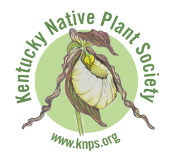The Lady Slipper newsletter of the Kentucky Native Plant Society has been published since the Society’s founding in 1986. We occasionally feature an article from a past issue. This article, from 2009, is a look at some of the oldest trees in Kentucky. This article first appeared in Winter 2009, Vol. 24, No. 2. If you would like to see other past issues, visit the Lady Slipper Archives, where all issues from Vol. 1, February 1986 to Vol. 39, 2024, can be found.
Floracliff’s Old Trees: Acorns of Restoration for the Inner Bluegrass Region
By Neil Pederson, Eastern Kentucky University
Old trees are windows into historical events. The science of tree-ring analysis takes advantage of a characteristic common to all trees: no matter how bad things get – an approaching fire, tornado, drought, etc. – trees must stay in place and absorb these abuses. Though each tree is an individual, environmental events like these impact all trees in a similar fashion: events that limit a tree’s ability to gain energy reduce the annual ring width. Scientists interpret patterns of ring widths within tree populations to reconstruct environmental history. To date, tree-ring scientists have successfully reconstructed drought history, Northern Hemisphere temperature, fire histories, insect outbreaks, etc. Tree-ring studies have also enriched human history. Scientists have dated logs from ancient structures that, in turn, triggered revisions of human history. Similarly, tree-ring evidence indicates that a severe drought likely contributed to the failure of The Lost Colony in Roanoke, NC and to the outbreak of a highly-contagious disease and subsequent crashes of the human population in ancient Mexico City. Just a few old trees in a small landscape can shed light into long-forgotten or unobserved events.
Continue reading From the Lady Slipper Archives: Floracliff’s Old Trees: Acorns of Restoration for the Inner Bluegrass Region





